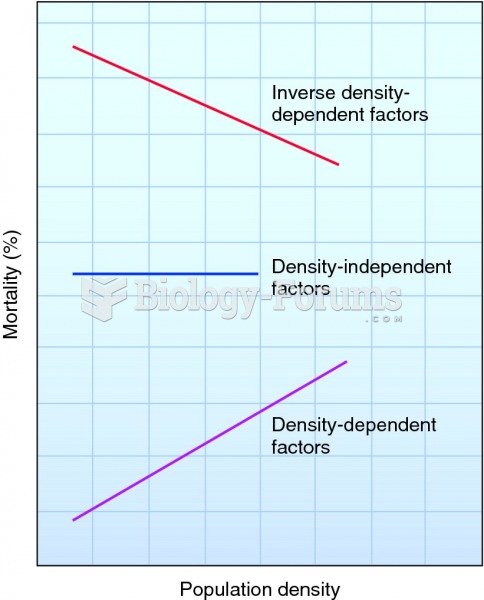Answer to Question 1
Answer: 2, 3, 4, 5
Explanation: 2. Effective illness and injury prevention strategies for the GLBT population include measures to prevent HIV infection and immunization for illnesses such as hepatitis A and B for those at risk of infection. Population health nurses can promote strengthening partner relationships. Other illness and injury prevention strategies would be similar to those for the general population and include eliminating risk behaviors such as smoking. Recommending hormone therapy would be appropriate to resolve an existing health problem.
3. Effective illness and injury prevention strategies for the GLBT population include measures to prevent HIV infection and immunization for illnesses such as hepatitis A and B for those at risk of infection. Population health nurses can promote strengthening partner relationships. Other illness and injury prevention strategies would be similar to those for the general population and include eliminating risk behaviors such as smoking. Recommending hormone therapy would be appropriate to resolve an existing health problem.
4. Effective illness and injury prevention strategies for the GLBT population include measures to prevent HIV infection and immunization for illnesses such as hepatitis A and B for those at risk of infection. Population health nurses can promote strengthening partner relationships. Other illness and injury prevention strategies would be similar to those for the general population and include eliminating risk behaviors such as smoking. Recommending hormone therapy would be appropriate to resolve an existing health problem.
5. Effective illness and injury prevention strategies for the GLBT population include measures to prevent HIV infection and immunization for illnesses such as hepatitis A and B for those at risk of infection. Population health nurses can promote strengthening partner relationships. Other illness and injury prevention strategies would be similar to those for the general population and include eliminating risk behaviors such as smoking. Recommending hormone therapy would be appropriate to resolve an existing health problem.
Answer to Question 2
Answer: 1, 2, 3, 4
Explanation: 1. Heterosexism is the assumption that all people are heterosexual and belief that heterosexuality is normal and superior to other sexual orientations. Heterosexism results in oppression, stigmatization, discrimination, and violence against members of GLBT populations. Family rejection is a response to disclosure of a family member's homosexuality. This is not an outcome of heterosexism.
2. Heterosexism is the assumption that all people are heterosexual and belief that heterosexuality is normal and superior to other sexual orientations. Heterosexism results in oppression, stigmatization, discrimination, and violence against members of GLBT populations. Family rejection is a response to disclosure of a family member's homosexuality. This is not an outcome of heterosexism.
3. Heterosexism is the assumption that all people are heterosexual and belief that heterosexuality is normal and superior to other sexual orientations. Heterosexism results in oppression, stigmatization, discrimination, and violence against members of GLBT populations. Family rejection is a response to disclosure of a family member's homosexuality. This is not an outcome of heterosexism.
4. Heterosexism is the assumption that all people are heterosexual and belief that heterosexuality is normal and superior to other sexual orientations. Heterosexism results in oppression, stigmatization, discrimination, and violence against members of GLBT populations. Family rejection is a response to disclosure of a family member's homosexuality. This is not an outcome of heterosexism.







